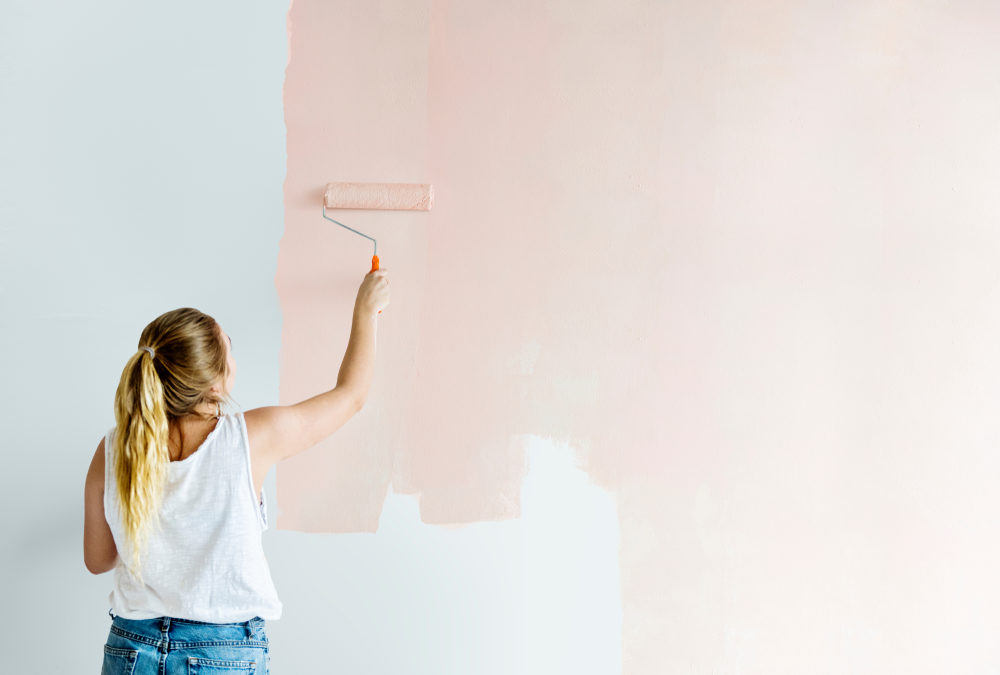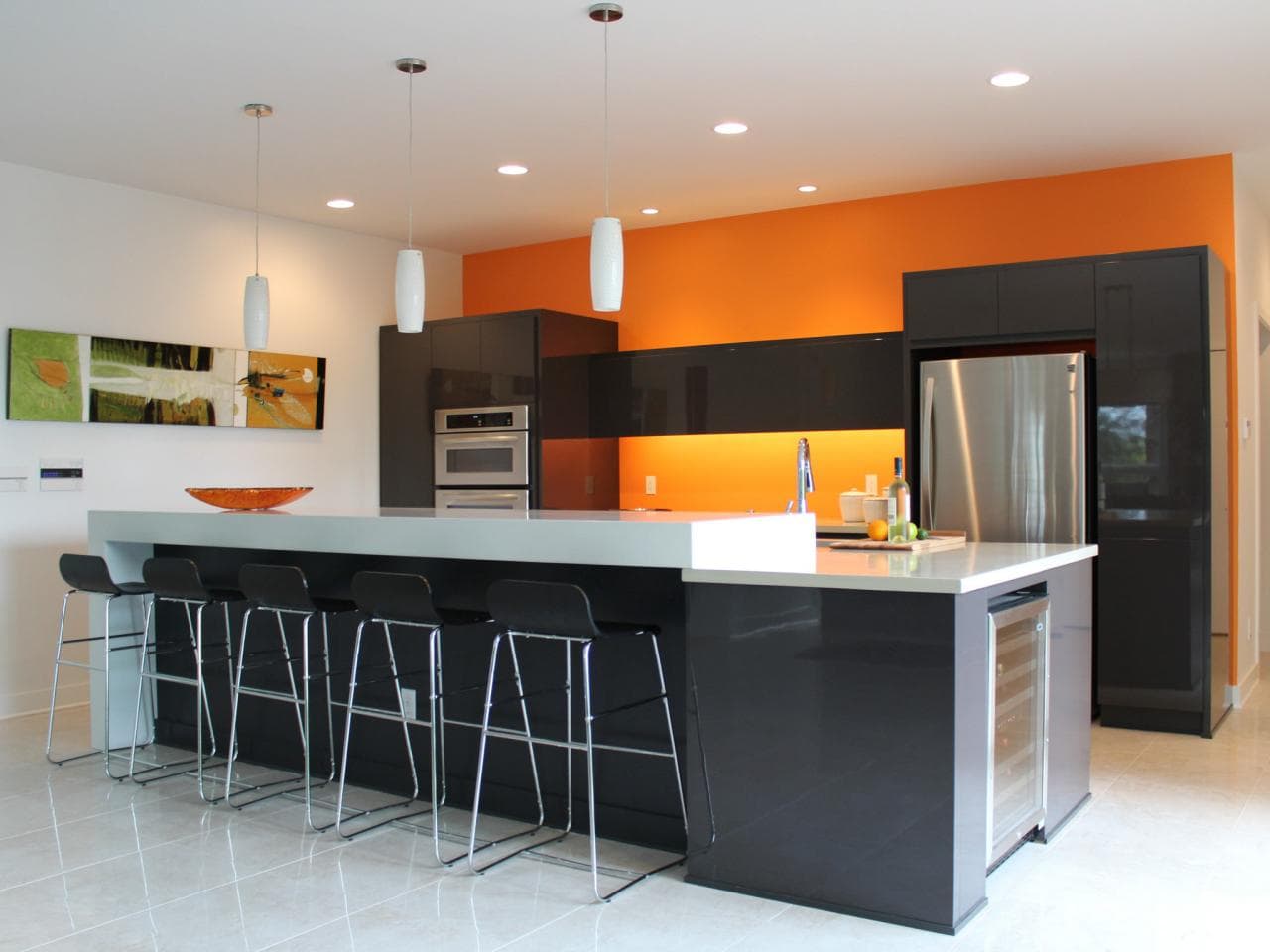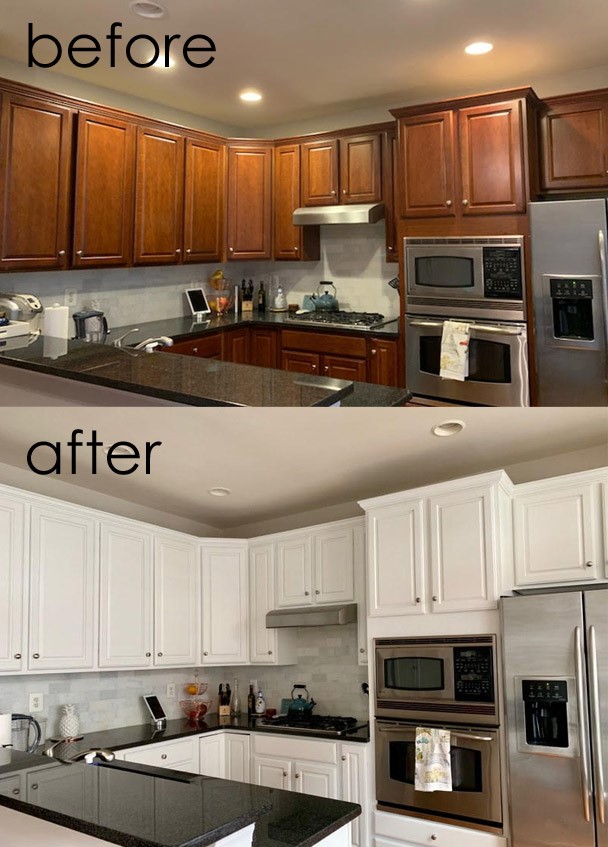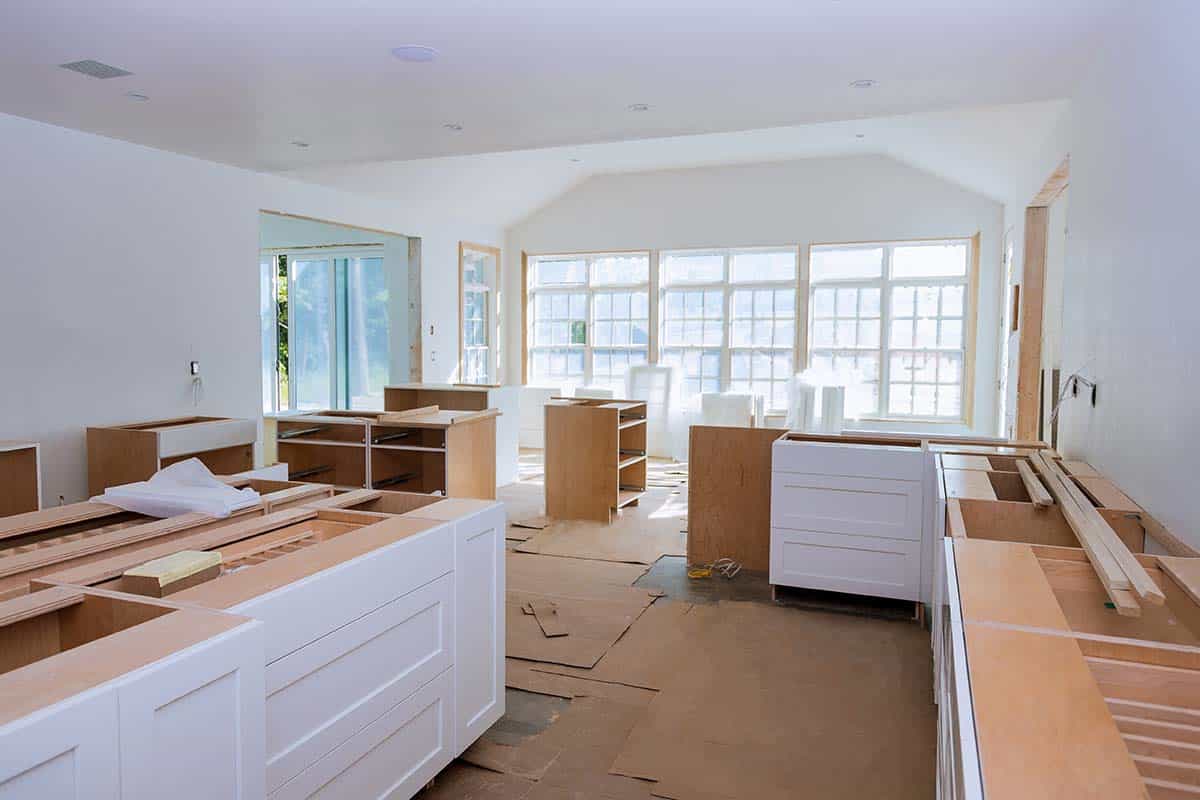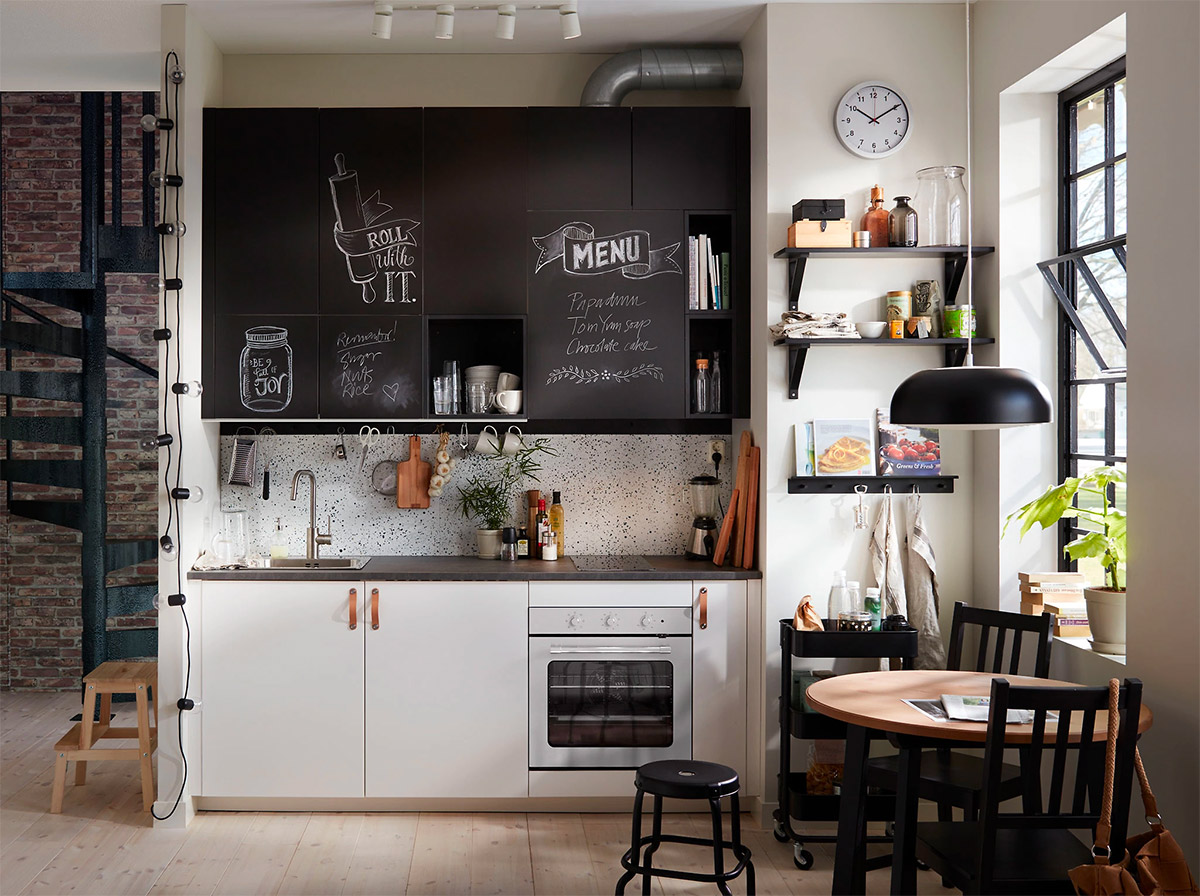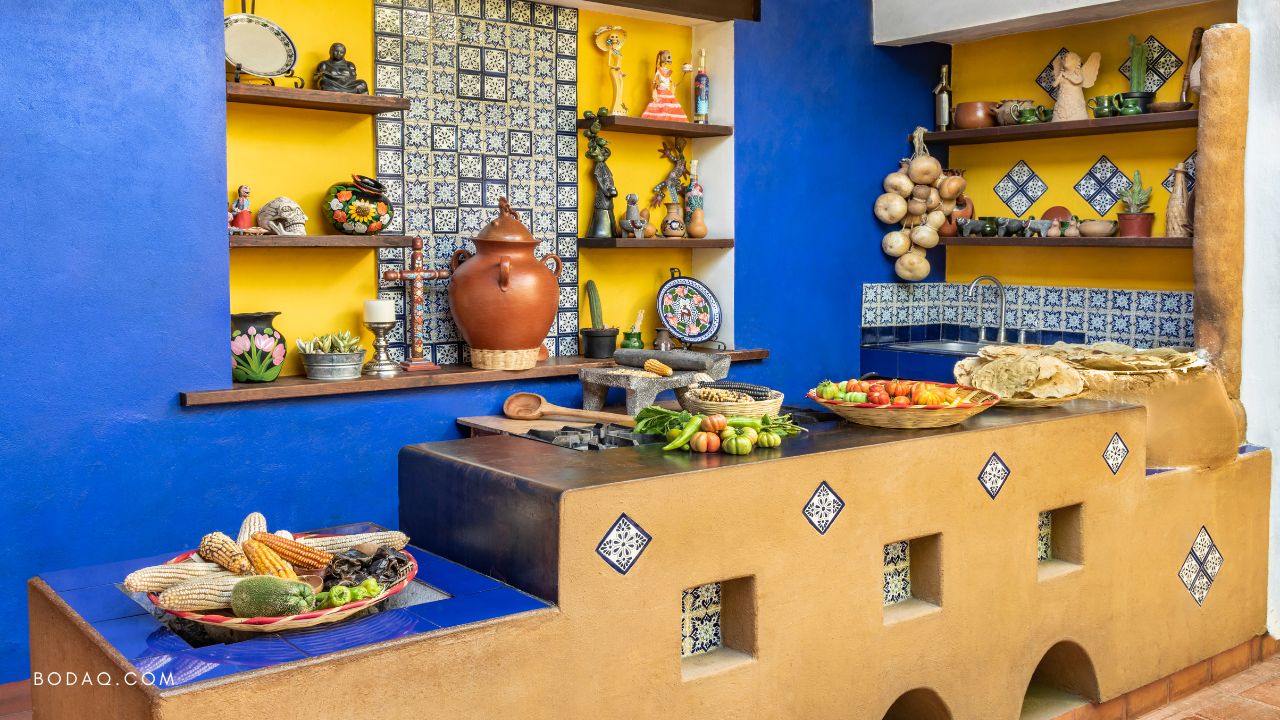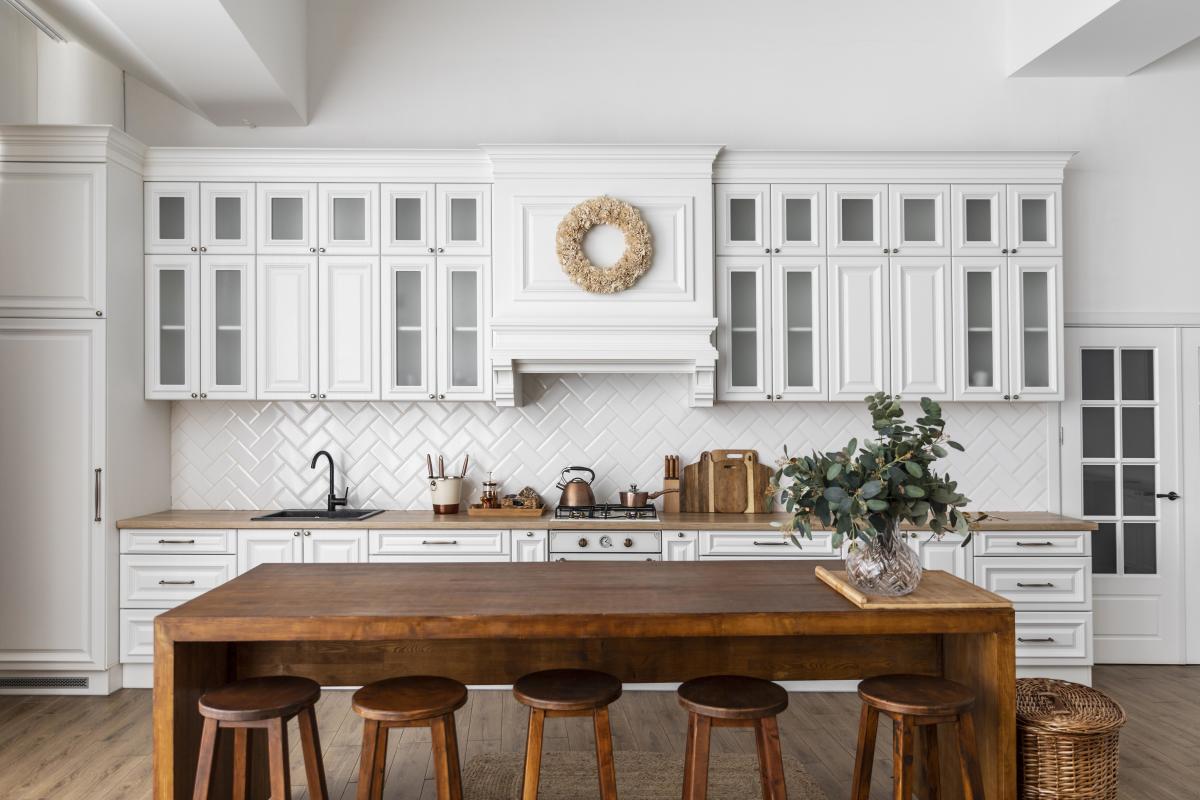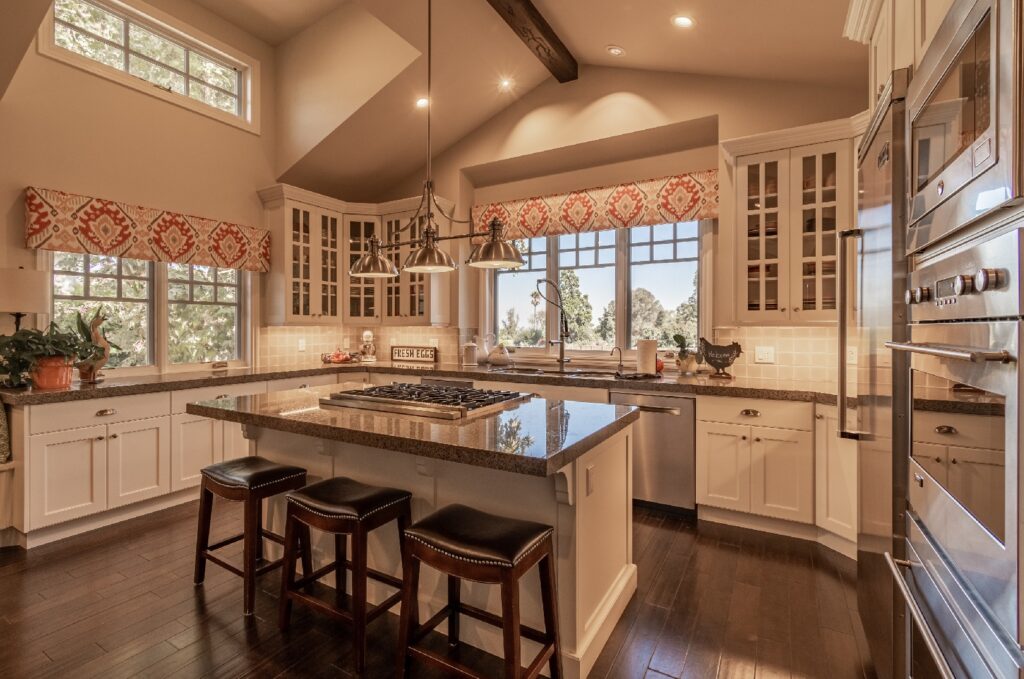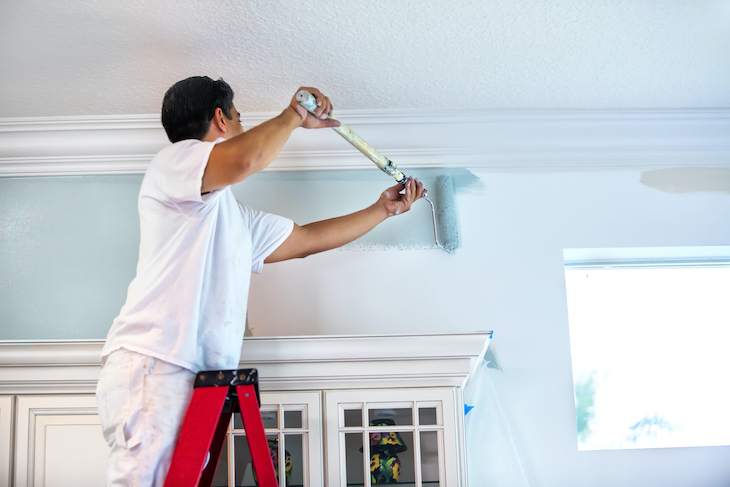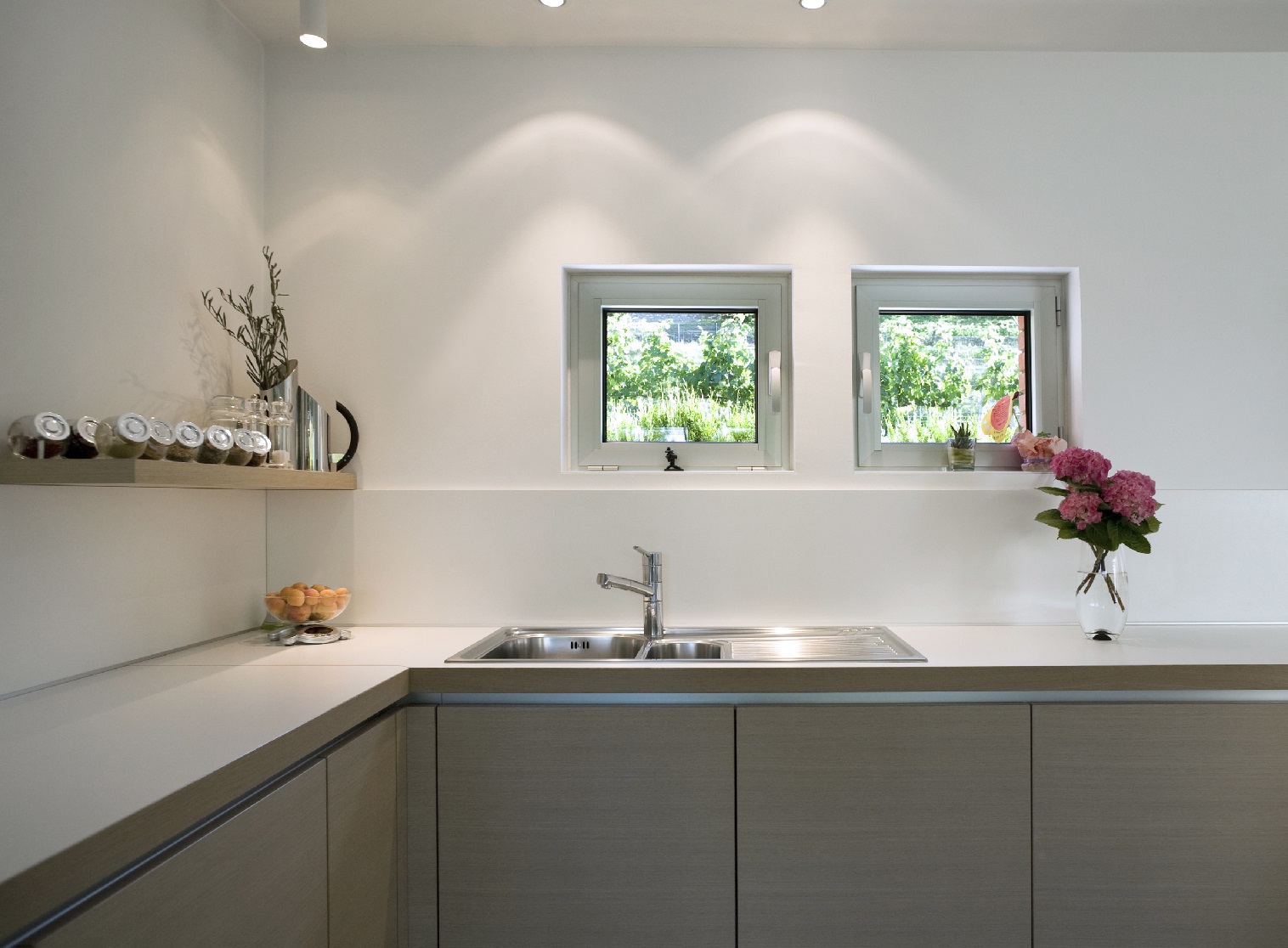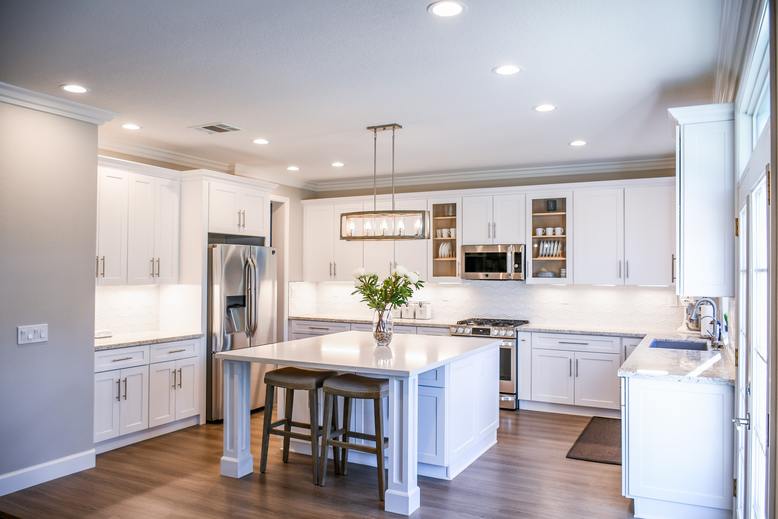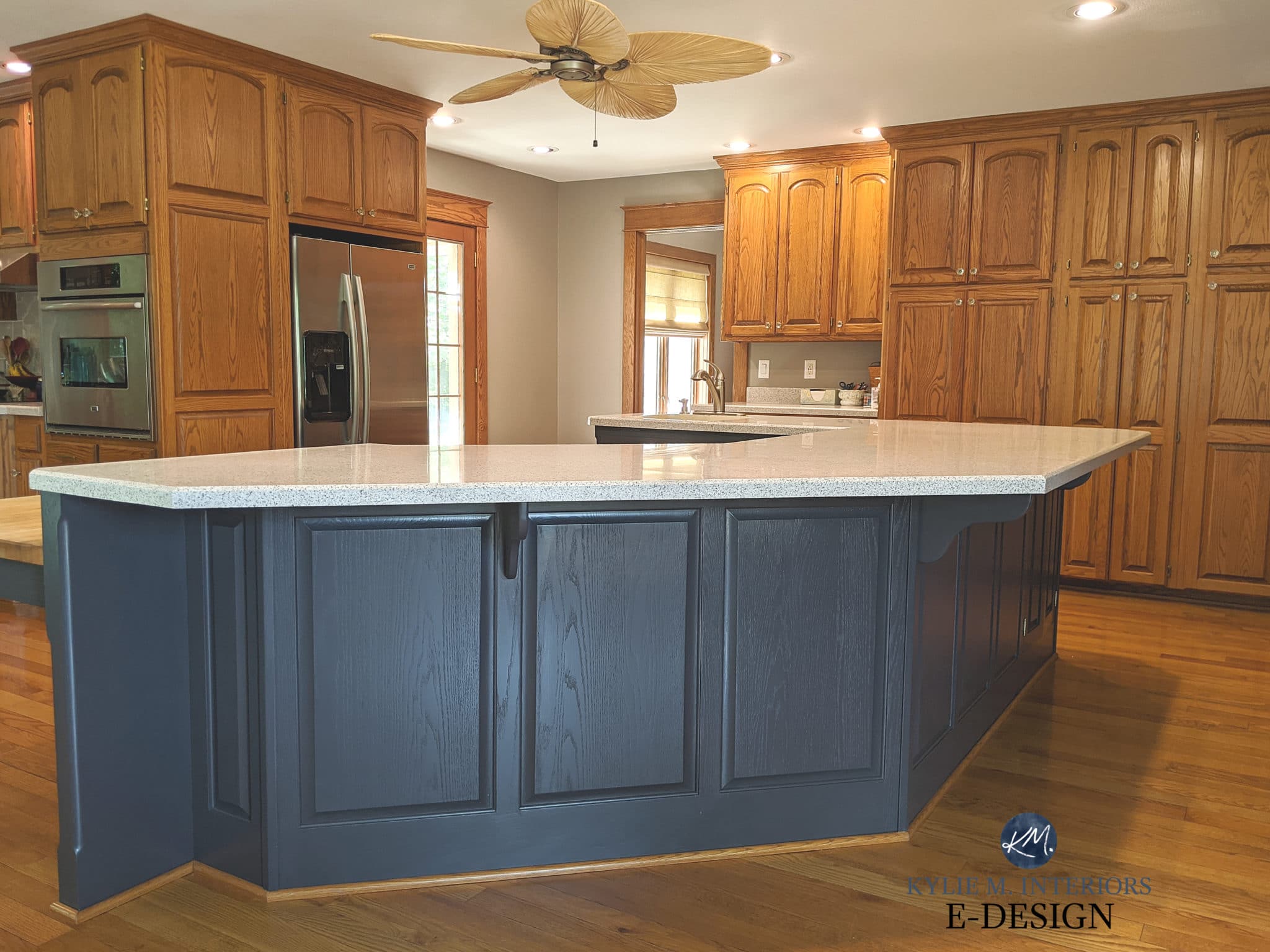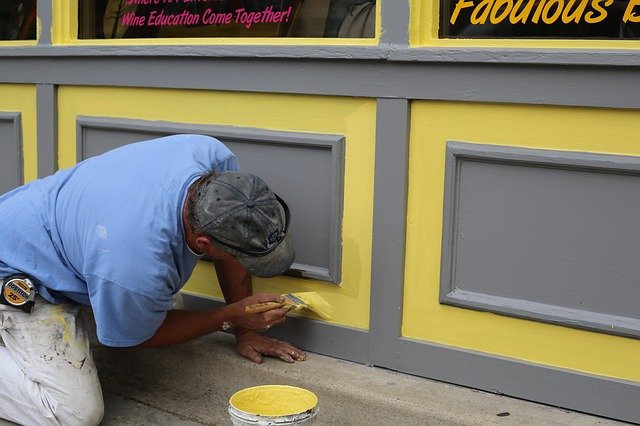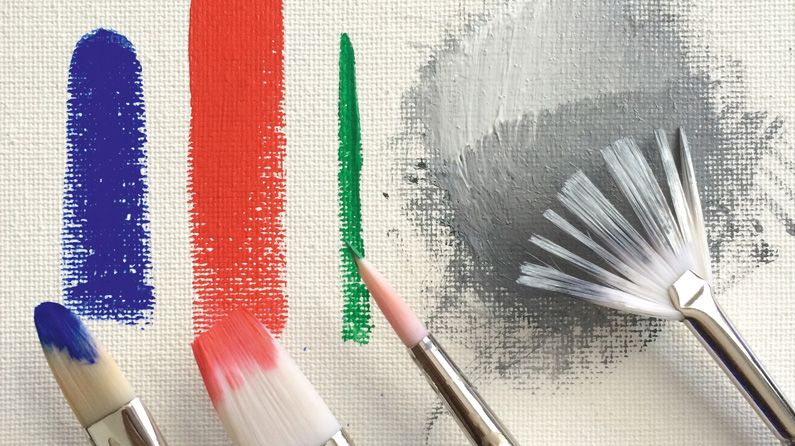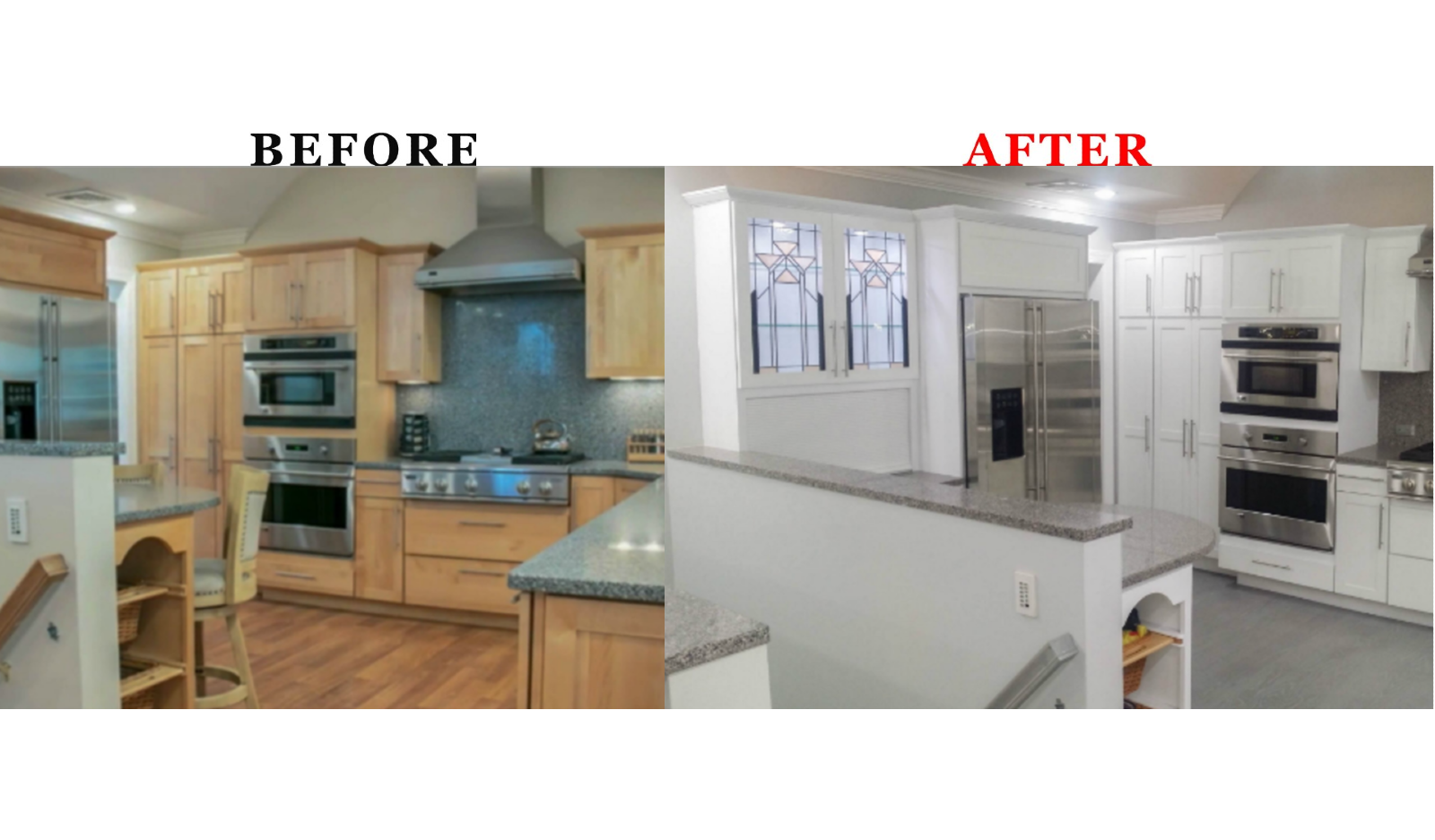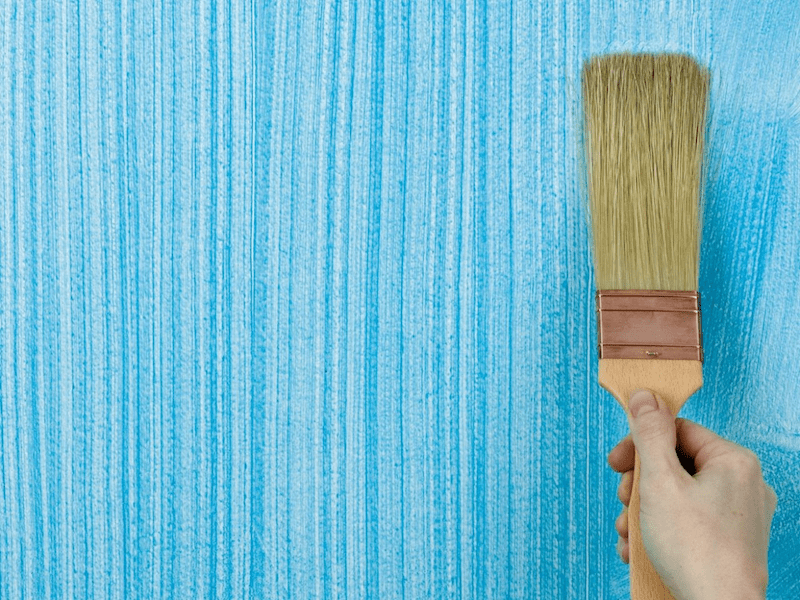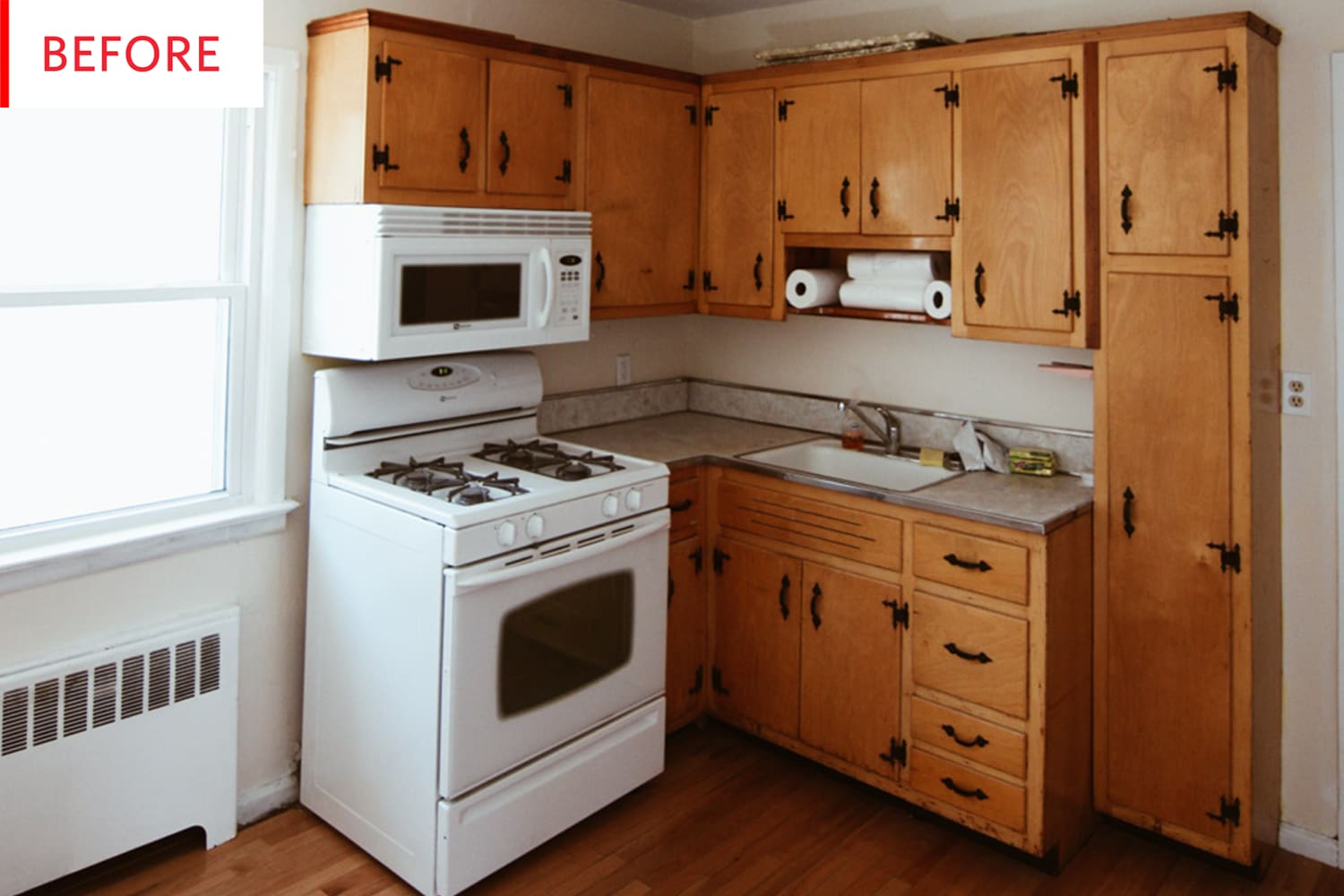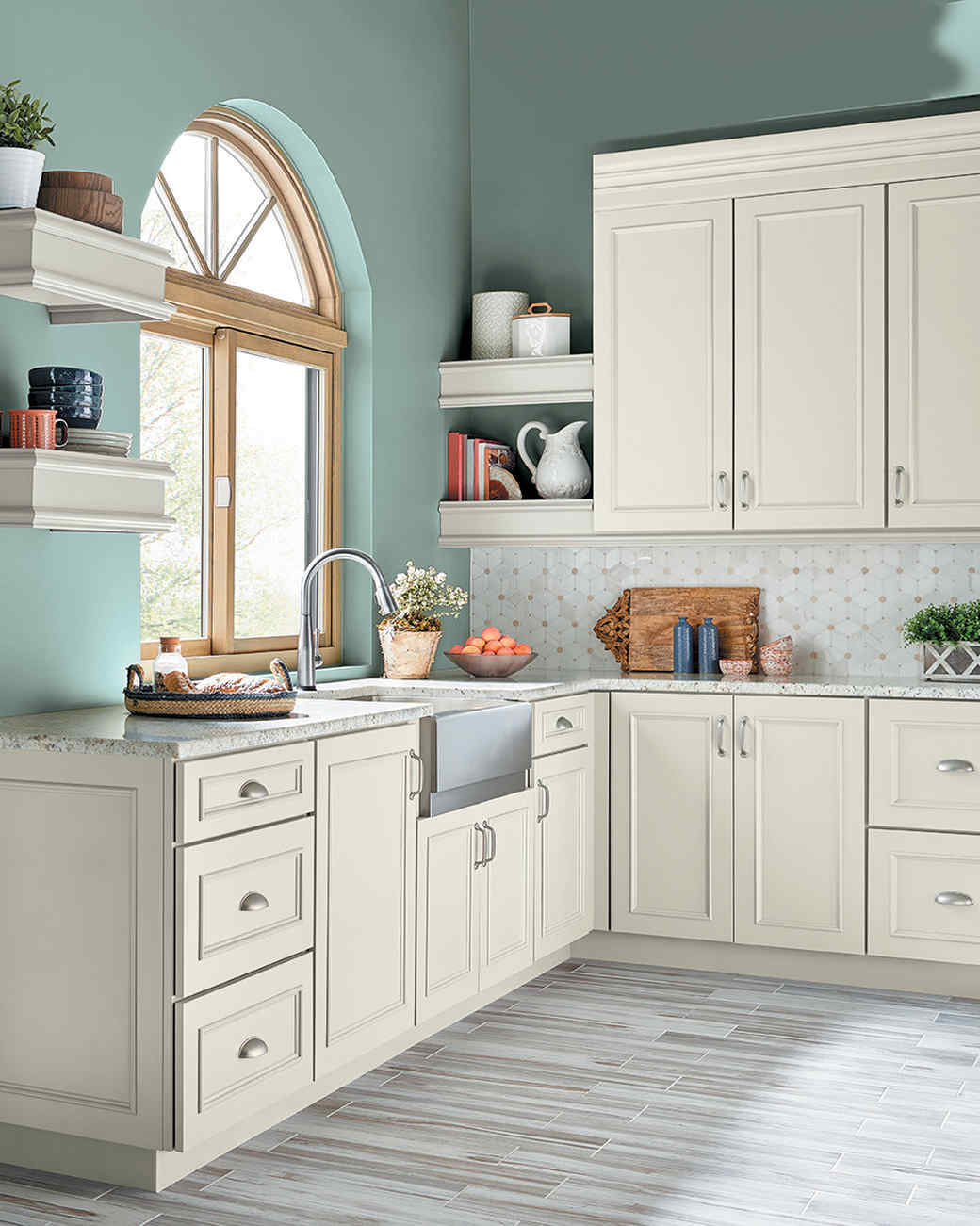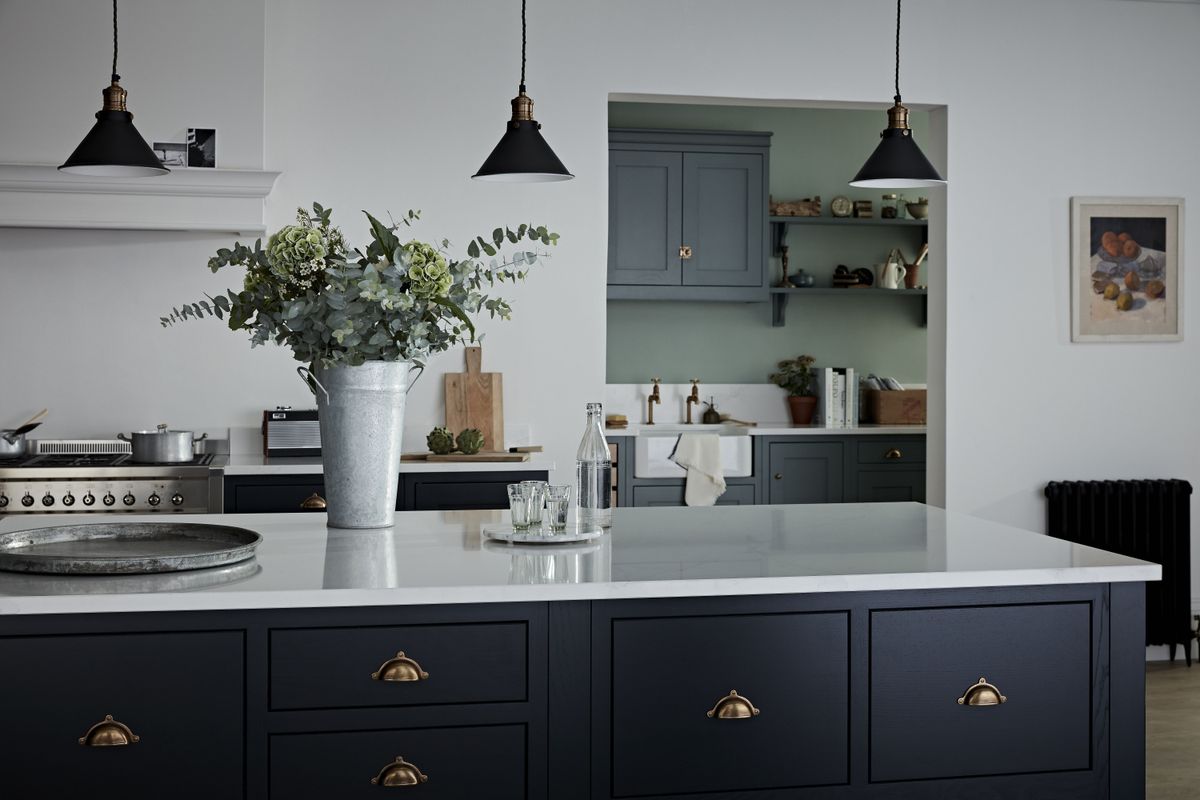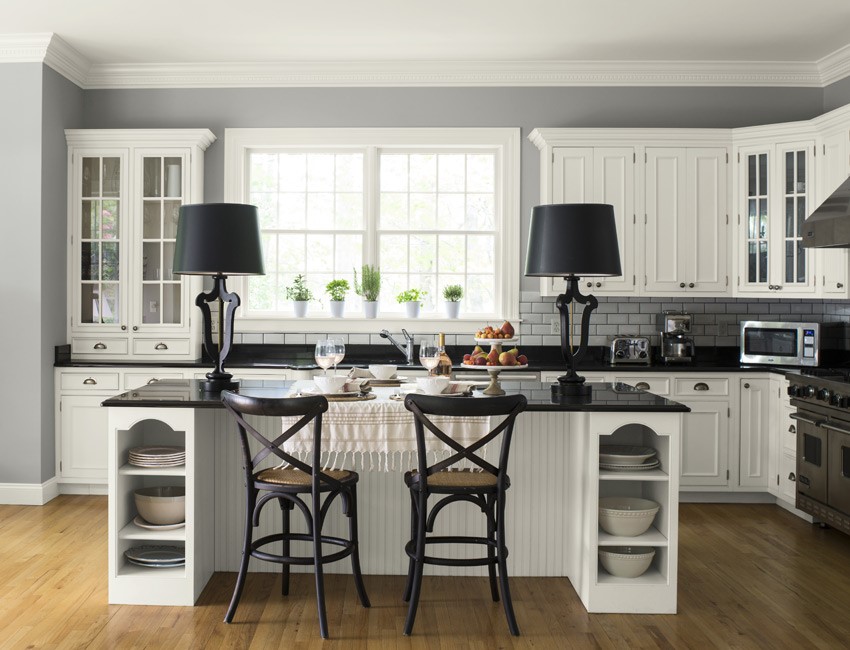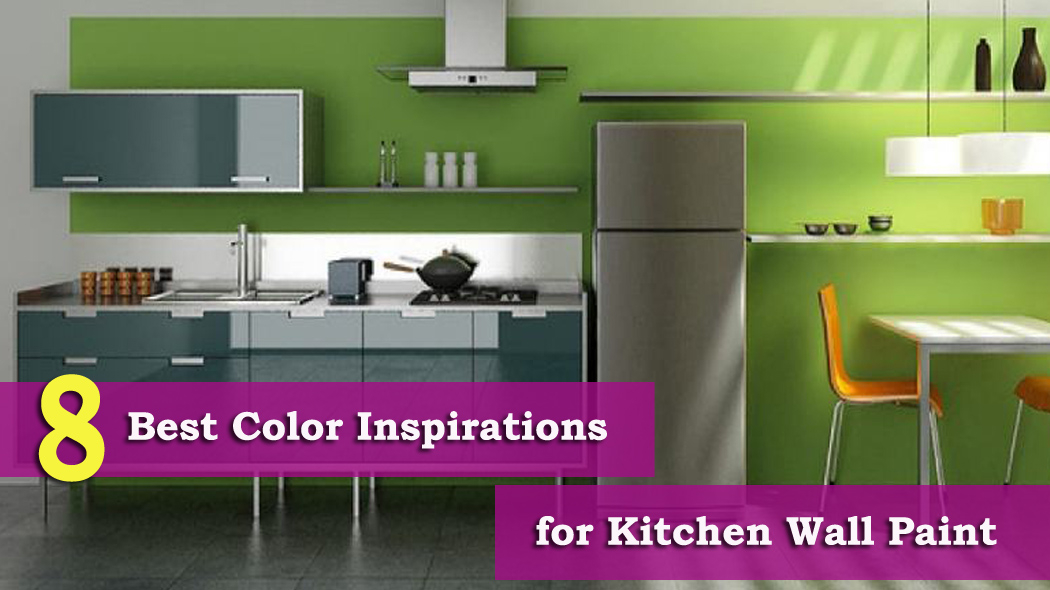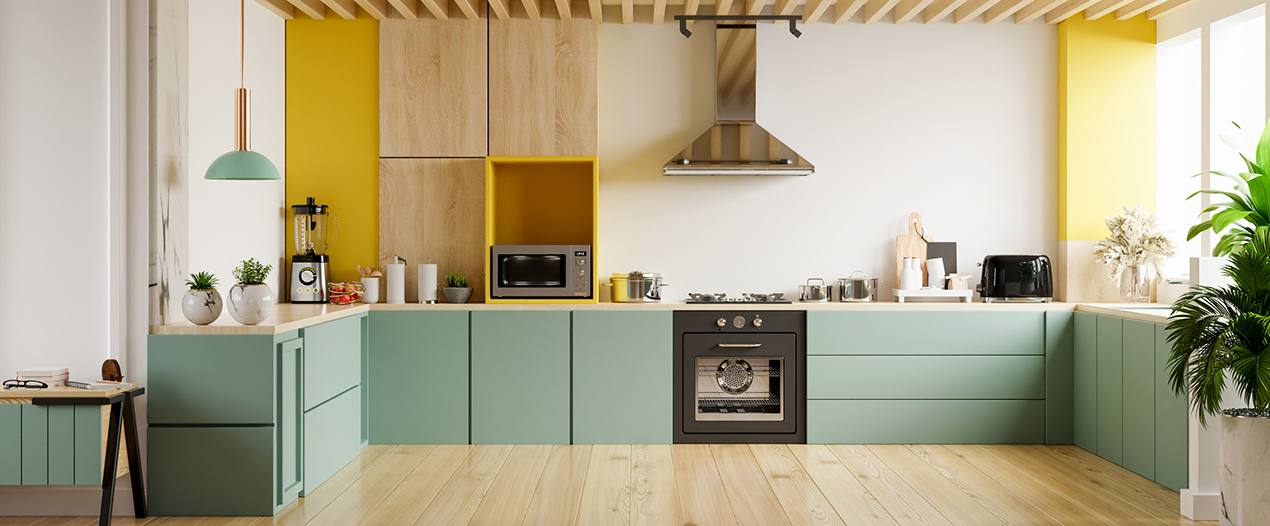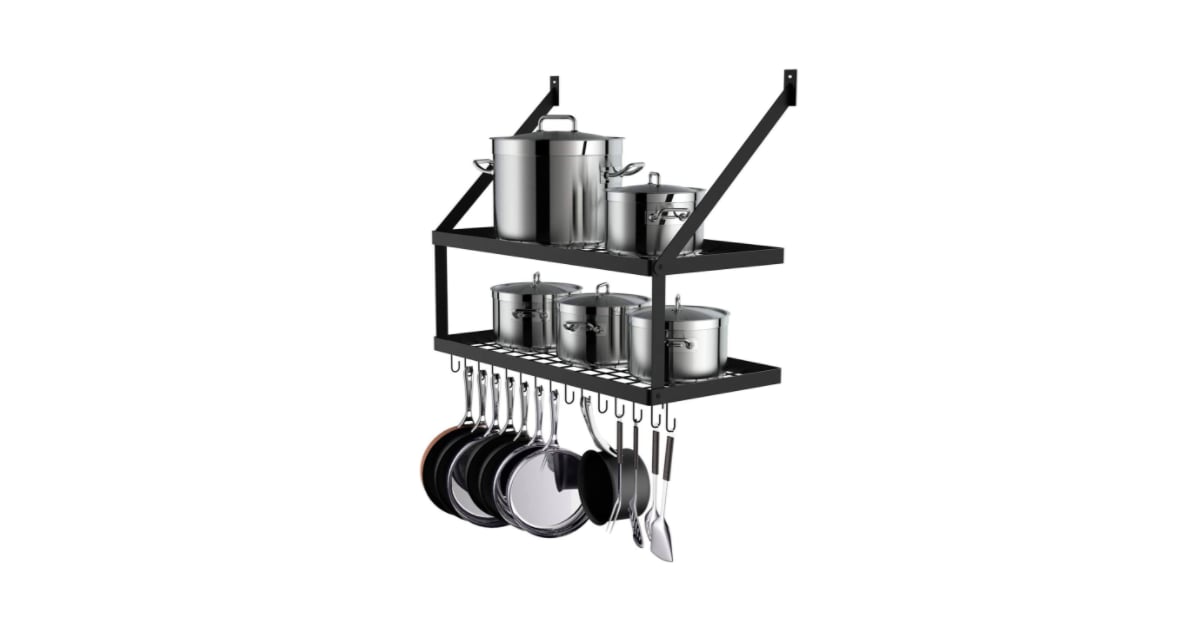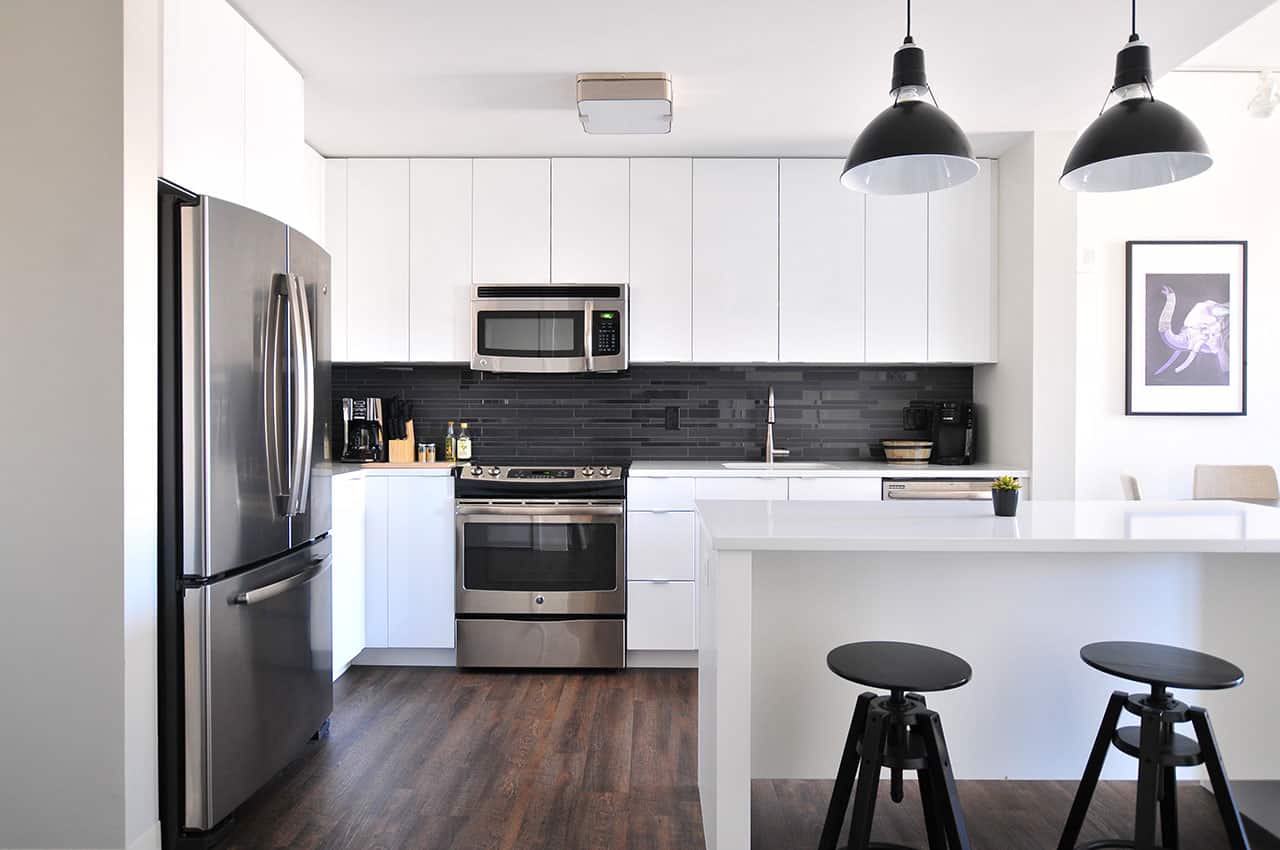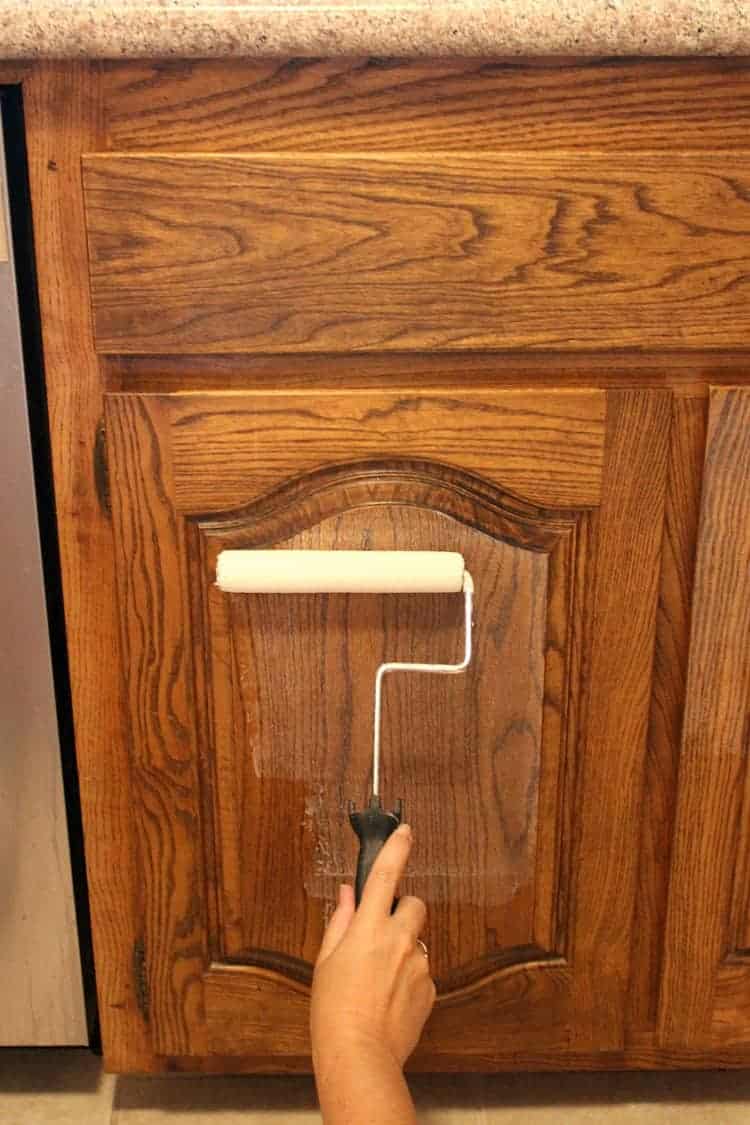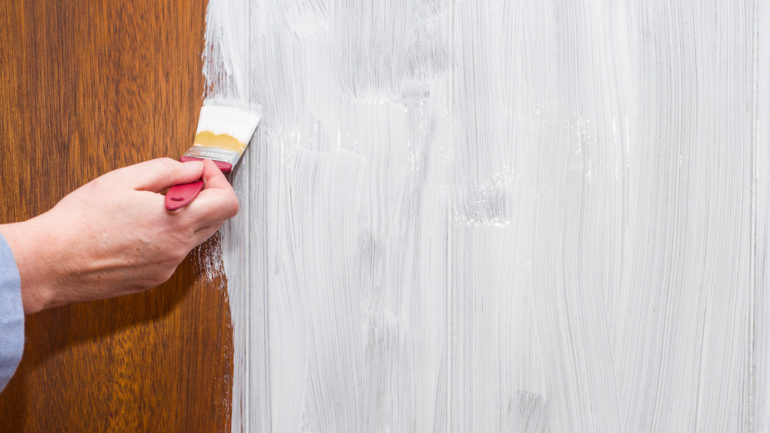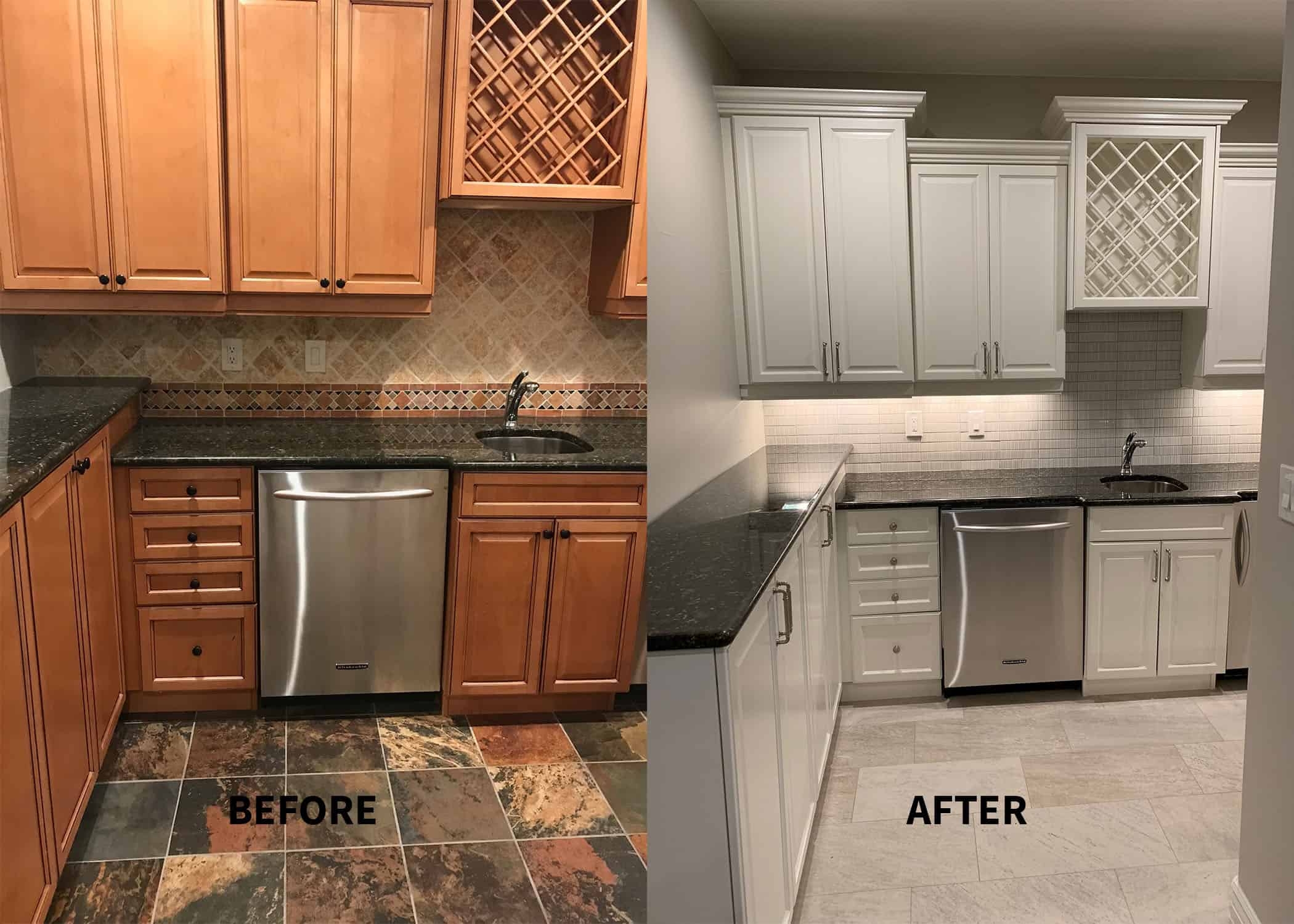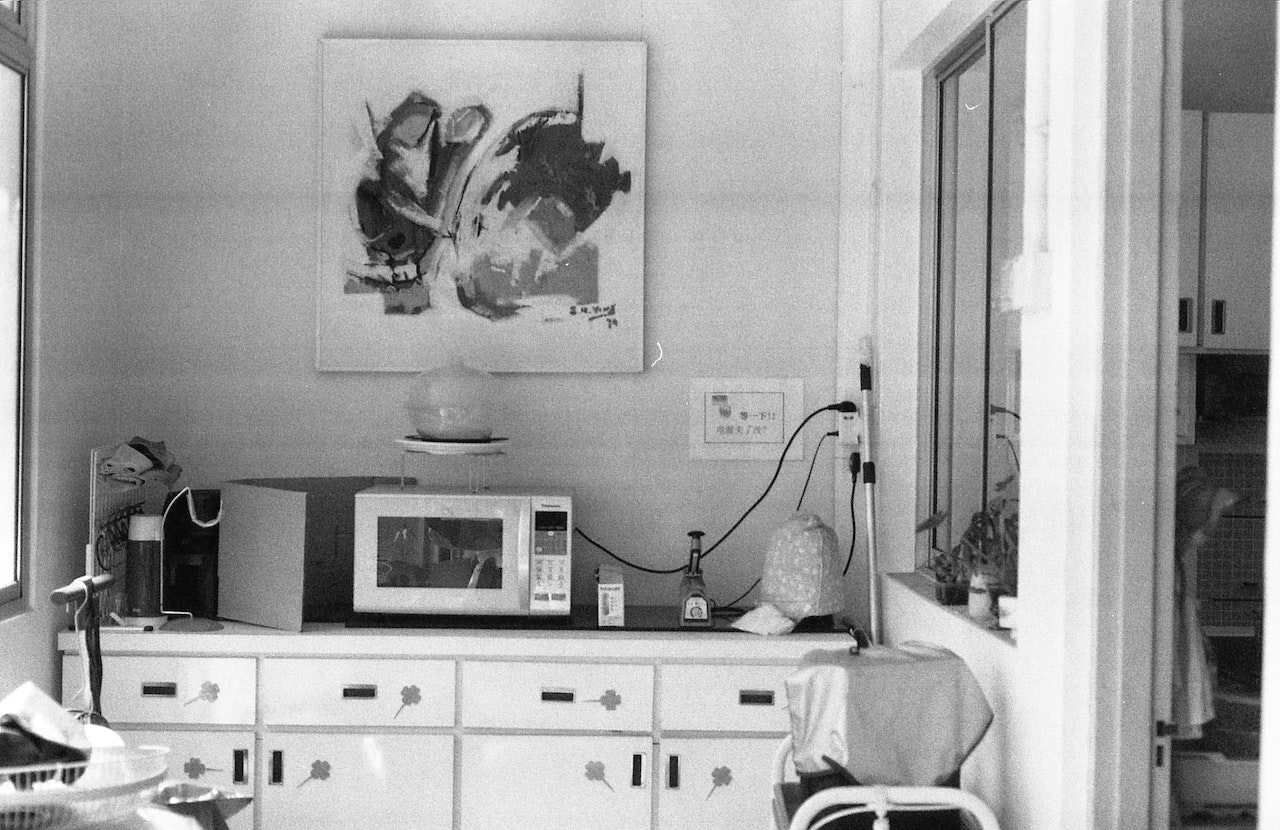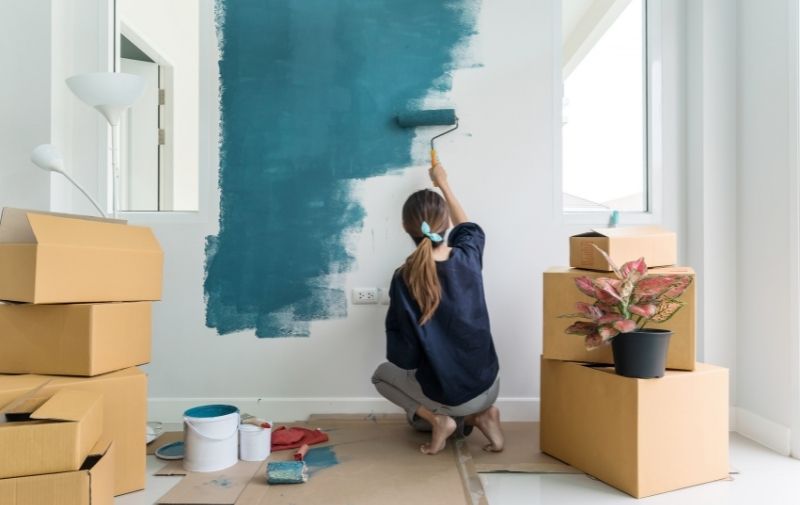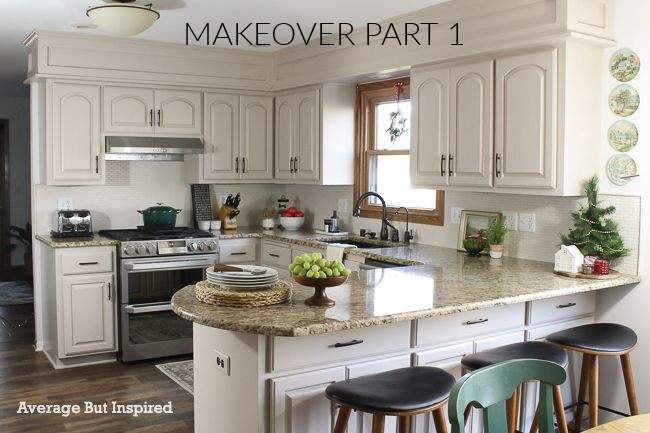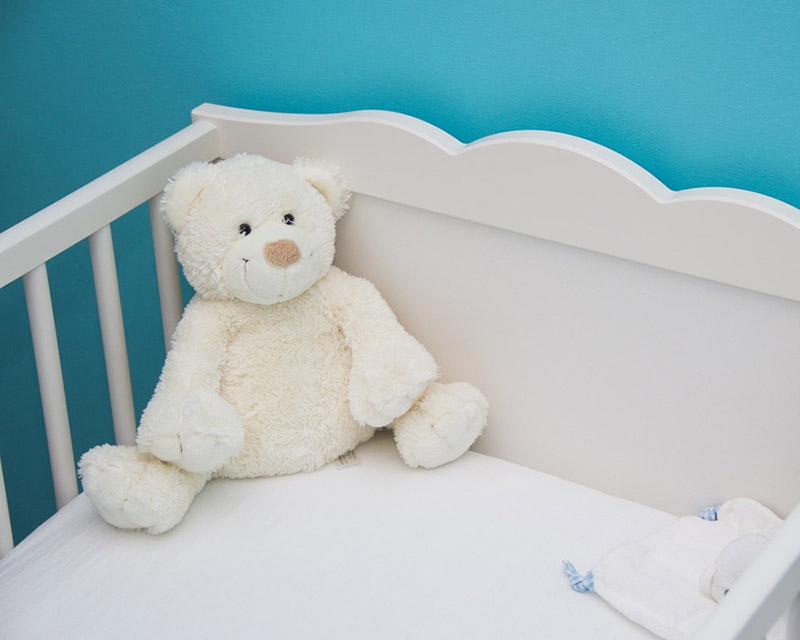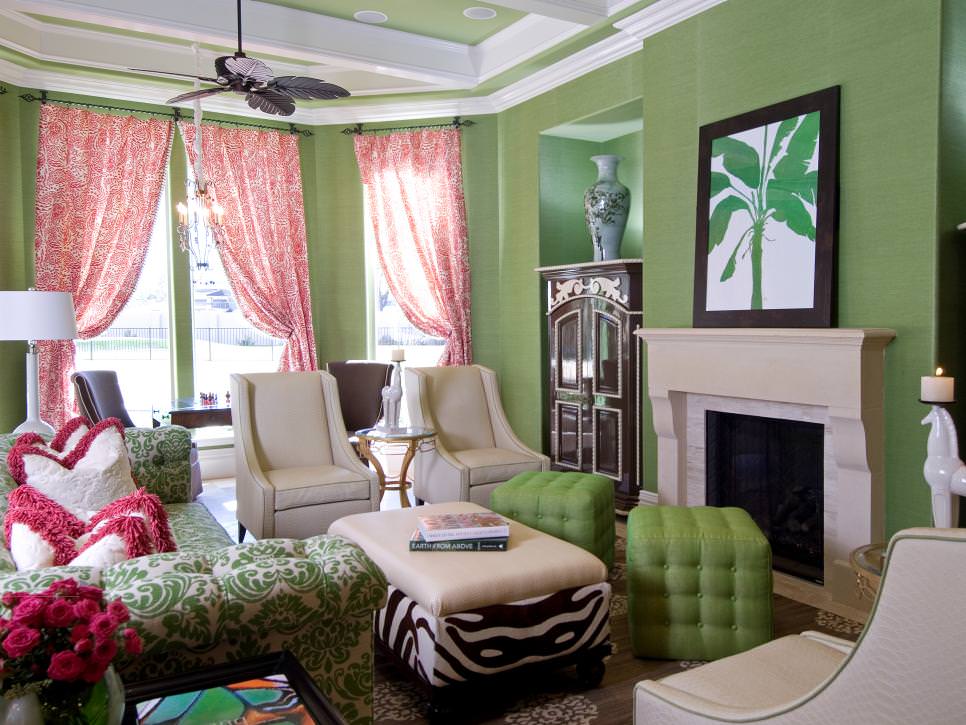When it comes to refreshing your kitchen walls with a new coat of paint, one of the first and most important decisions you’ll have to make is choosing the right color. This color will set the tone for your entire kitchen and can greatly impact the overall aesthetic of the space. So, how do you choose the perfect paint color for your kitchen walls? Start by considering the overall style and feel of your kitchen. Is it modern and sleek? Cozy and rustic? Bold and colorful? The color you choose should complement the existing style and decor in your kitchen. You can also draw inspiration from your kitchen’s existing colors, such as the cabinets or countertops, to create a cohesive look. Another factor to consider is the amount of natural light your kitchen receives. If your kitchen is on the darker side, opt for light or bright colors to help open up the space. If your kitchen has plenty of natural light, you can be more daring with your color choice. Remember to also think about the mood you want to create in your kitchen. Warm, earthy tones can create a cozy and inviting atmosphere, while cool tones can make the space feel more modern and calming.1. Choosing the Right Paint Color for Your Kitchen Walls
Now that you’ve chosen the perfect paint color, it’s time to prep your kitchen walls for painting. Proper preparation is crucial for achieving a professional-looking paint job that will last. First, remove any nails, hooks, or other hardware from the walls and fill in any holes or cracks with spackling paste. Then, thoroughly clean the walls with a mild detergent and warm water to remove any dirt, grease, or grime. Next, give your walls a light sanding to smooth out any imperfections and create a better surface for the paint to adhere to. Wipe away any dust with a damp cloth and let the walls dry completely before moving on to the next step. If your walls are currently painted with a glossy or oil-based paint, they will need to be primed before applying a new coat of paint. This will ensure the paint adheres properly and prevents any potential peeling or chipping later on. Use a high-quality primer and follow the manufacturer’s instructions for best results.2. How to Prep Your Kitchen Walls for Painting
Now comes the fun part – painting your kitchen walls! Here are some tips to help you achieve a professional-looking paint job: - Start by painting the edges and corners of the wall with a brush, then use a roller to cover the larger areas. - Use painter’s tape to protect areas that you don’t want to get paint on, such as trim, cabinets, and appliances. - Paint in thin, even coats, and let each coat dry completely before applying the next one. This will prevent drips and ensure a smooth finish. - For an extra smooth finish, lightly sand the walls between coats. - Keep a damp cloth handy to quickly wipe away any paint drips or mistakes.3. Tips for Painting Kitchen Walls Like a Pro
When it comes to painting your kitchen walls, it’s important to choose the right type of paint. The kitchen is a high-traffic area that is prone to splatters and spills, so you’ll want a paint that is durable and easy to clean. A semi-gloss or satin finish is a good choice for kitchen walls as it is both durable and easy to wipe down. For a more eco-friendly option, consider using low or zero VOC paint, which is better for the environment and your health. These paints emit fewer harmful chemicals and odors, making them a safer choice for your kitchen.4. The Best Type of Paint for Kitchen Walls
A fresh coat of paint can do wonders for a tired and dull-looking kitchen. It can instantly brighten up the space and give it a new lease on life. If you want to freshen up your kitchen walls without completely changing the color, consider using the same color in a different shade or tone. This will give your kitchen a subtle but noticeable change. Another way to freshen up your kitchen walls is to create an accent wall with a bold or vibrant color. This can add a pop of color and personality to your kitchen without overwhelming the space. Just be sure to choose a color that complements the rest of your kitchen’s color scheme.5. How to Freshen Up Your Kitchen Walls with a New Coat of Paint
There are a few painting techniques that can help give your kitchen walls a professional and polished look. One popular technique is called “cutting in,” which involves painting a straight line along the edges of the wall with a brush before using a roller to cover the larger areas. This will help create a clean and crisp edge. Another technique is called “feathering,” which involves lightly dragging a dry paintbrush over the wet paint to create a soft and subtle texture. This works particularly well for lighter colors and can add dimension to your kitchen walls.6. Painting Techniques for a Professional-Looking Kitchen
If your kitchen is feeling outdated and in need of a refresh, a fresh coat of paint can make a huge difference. It’s a relatively easy and budget-friendly way to update your kitchen and give it a more modern look. Choose a trendy color, such as a deep navy or a soft sage green, to instantly transform your kitchen. You can also update your kitchen walls by using stencils or decals to create a unique and personalized design. This can add a fun and creative touch to your kitchen and make it stand out.7. Updating Your Kitchen with a Fresh Coat of Paint
In addition to choosing the right type of paint, it’s also important to consider the finish. The finish refers to the sheen or level of glossiness in the paint. For kitchen walls, a satin or semi-gloss finish is recommended as it is easy to clean and can withstand regular scrubbing and wiping. A matte or flat finish is not recommended for kitchen walls as it can be difficult to clean and may show marks and stains more easily.8. Choosing the Right Finish for Your Kitchen Wall Paint
If your kitchen walls are currently painted and you want to give them a new look, you may be wondering if you need to completely remove the old paint before applying a new coat. The answer is no, you can paint over old paint as long as it is in good condition. Just be sure to clean and prep the walls properly before painting to ensure the new paint adheres well.9. How to Paint Over Old Kitchen Wall Paint
In conclusion, refreshing your kitchen walls with a new coat of paint is a simple but effective way to transform the space. By choosing the right color, prepping and painting properly, and using the right techniques and finishes, you can achieve a professional-looking result that will breathe new life into your kitchen. So, why not give your kitchen a fresh and stylish update with a fresh coat of paint?10. Transform Your Kitchen with a Fresh Coat of Paint
Freshen Up Your Kitchen Wall with New Paint
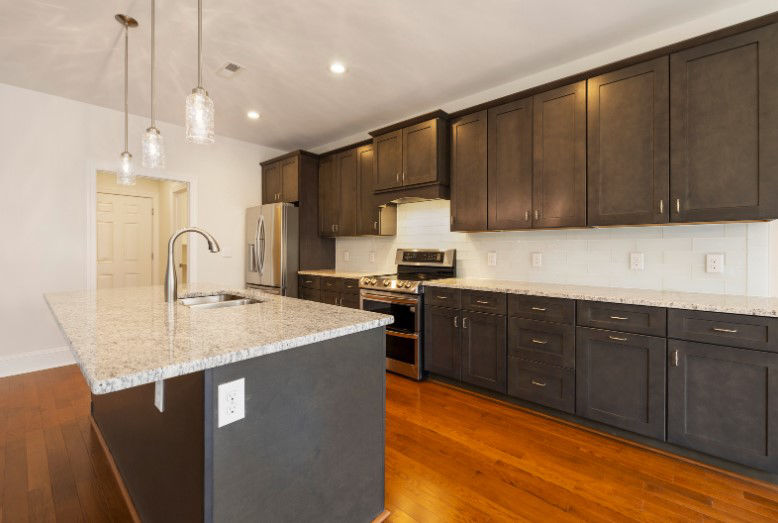
Elevate the Look of Your Kitchen with a Fresh Coat of Paint
 If you're looking to update the look of your kitchen without breaking the bank, a fresh coat of paint on your walls is the perfect solution. Not only is it a budget-friendly option, but it also allows you to completely transform the appearance of your kitchen.
Kitchen wall paint
is an important element in house design as it sets the tone for the entire space. With the right color and finish, you can create a
modern, timeless, or even rustic
look in your kitchen. In this article, we will discuss the benefits of
freshening up your kitchen wall with new paint
and how to go about it.
If you're looking to update the look of your kitchen without breaking the bank, a fresh coat of paint on your walls is the perfect solution. Not only is it a budget-friendly option, but it also allows you to completely transform the appearance of your kitchen.
Kitchen wall paint
is an important element in house design as it sets the tone for the entire space. With the right color and finish, you can create a
modern, timeless, or even rustic
look in your kitchen. In this article, we will discuss the benefits of
freshening up your kitchen wall with new paint
and how to go about it.
The Importance of Choosing the Right Color and Finish
 When it comes to
kitchen wall paint
, the color and finish you choose can make a huge impact on the overall design of your kitchen.
Neutral tones
such as white, beige, or gray are popular choices as they create a clean and
timeless
look. They also provide a neutral backdrop for other elements in the kitchen, such as cabinets and countertops, to stand out. However, if you're feeling bold and want to add a pop of color,
bold hues
like blue, green, or even red can add character and personality to your kitchen. The finish of the paint is also important as it affects the overall look and feel of the kitchen.
Matte finishes
are popular for a more modern and sleek look, while
glossy finishes
can add a touch of elegance and shine to the space.
When it comes to
kitchen wall paint
, the color and finish you choose can make a huge impact on the overall design of your kitchen.
Neutral tones
such as white, beige, or gray are popular choices as they create a clean and
timeless
look. They also provide a neutral backdrop for other elements in the kitchen, such as cabinets and countertops, to stand out. However, if you're feeling bold and want to add a pop of color,
bold hues
like blue, green, or even red can add character and personality to your kitchen. The finish of the paint is also important as it affects the overall look and feel of the kitchen.
Matte finishes
are popular for a more modern and sleek look, while
glossy finishes
can add a touch of elegance and shine to the space.
The Benefits of Freshening Up Your Kitchen Wall with New Paint
 Besides the obvious aesthetic benefits, there are many other advantages to
freshening up your kitchen wall with new paint
. Over time, kitchen walls can become dull and worn out due to daily wear and tear, cooking, and exposure to steam and grease. A fresh coat of paint can
revive
the walls and make them look brand new again. It can also
protect
the walls from further damage and make them easier to clean. Additionally, painting your kitchen walls can
increase
the value of your home and make it more appealing to potential buyers in the future.
Besides the obvious aesthetic benefits, there are many other advantages to
freshening up your kitchen wall with new paint
. Over time, kitchen walls can become dull and worn out due to daily wear and tear, cooking, and exposure to steam and grease. A fresh coat of paint can
revive
the walls and make them look brand new again. It can also
protect
the walls from further damage and make them easier to clean. Additionally, painting your kitchen walls can
increase
the value of your home and make it more appealing to potential buyers in the future.
How to Go About Freshening Up Your Kitchen Wall with New Paint
 Before starting a painting project, it's important to
properly prepare
the walls by cleaning them and filling in any cracks or holes. It's also a good idea to
prime
the walls before painting to ensure a smooth and even finish. When choosing a paint, make sure to select a high-quality product that is specifically designed for kitchen walls and is
moisture-resistant
. It's also important to use the right tools, such as a good quality brush or roller, to achieve a professional-looking finish. If you're not confident in your painting skills, consider hiring a professional painter to ensure the best results.
In conclusion, a fresh coat of paint on your kitchen walls can make a big impact on the overall design and feel of your kitchen. Whether you choose a neutral color to create a timeless look or a bold hue to add a pop of color,
freshening up your kitchen wall with new paint
is a simple and budget-friendly way to elevate the look of your kitchen. So why not grab a paintbrush and give your kitchen walls a much-needed makeover?
Before starting a painting project, it's important to
properly prepare
the walls by cleaning them and filling in any cracks or holes. It's also a good idea to
prime
the walls before painting to ensure a smooth and even finish. When choosing a paint, make sure to select a high-quality product that is specifically designed for kitchen walls and is
moisture-resistant
. It's also important to use the right tools, such as a good quality brush or roller, to achieve a professional-looking finish. If you're not confident in your painting skills, consider hiring a professional painter to ensure the best results.
In conclusion, a fresh coat of paint on your kitchen walls can make a big impact on the overall design and feel of your kitchen. Whether you choose a neutral color to create a timeless look or a bold hue to add a pop of color,
freshening up your kitchen wall with new paint
is a simple and budget-friendly way to elevate the look of your kitchen. So why not grab a paintbrush and give your kitchen walls a much-needed makeover?






